Address
304 North Cardinal
St. Dorchester Center, MA 02124
Work Hours
Monday to Friday: 7AM - 7PM
Weekend: 10AM - 5PM
Address
304 North Cardinal
St. Dorchester Center, MA 02124
Work Hours
Monday to Friday: 7AM - 7PM
Weekend: 10AM - 5PM
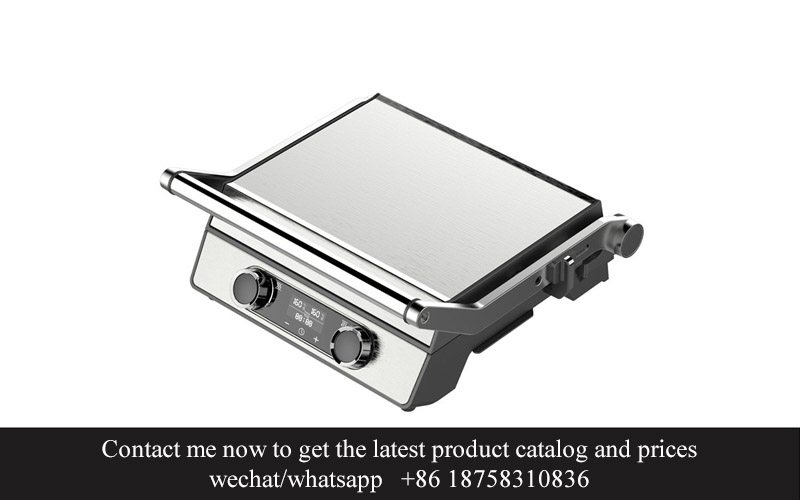
In a world where kitchen trends evolve at a rapid pace, ceramic coated non-stick cookware has emerged as a shining star, captivating the attention of home chefs and professional cooks alike. This innovative technology promises not only ease of use but also a greener approach to cooking. As we delve into the intricacies of this market, it becomes clear that the future of ceramic coated non-stick cookware is as promising as it is dynamic, offering a plethora of opportunities for both manufacturers and consumers.
The kitchen, once a realm dominated by the clinking of pots and the sizzle of pans, has been revolutionized by the advent of ceramic coated non-stick cookware. This innovative cooking tool has quietly taken the culinary world by storm, transforming modern kitchens into spaces of ease and efficiency. The rise of ceramic coated non-stick cookware isn’t just a fad; it’s a game-changer that’s here to stay.
The allure of non-stick cookware has always been its promise of effortless cooking and cleaning. Traditional non-stick surfaces, however, have had their drawbacks, such as wear and tear over time and concerns about the potential release of harmful chemicals. Enter ceramic coated non-stick cookware, which offers a more durable and healthier alternative.
Ceramic coatings are known for their scratch-resistant properties, making them a durable choice for the everyday kitchen. Unlike their predecessor, which could flake off and enter food, ceramic coatings maintain their integrity, ensuring that your food remains free from any unwanted particles. This durability is a testament to the advanced technology that goes into the manufacturing process of ceramic coated non-stick plates.
Modern kitchens are increasingly looking for ways to enhance the cooking experience, and ceramic coated non-stick cookware delivers on that front. The non-stick nature of the ceramic coating allows for a significant reduction in the use of butter or oil, making it a healthier option. This is particularly appealing to health-conscious consumers who are always on the lookout for ways to reduce fat intake in their meals.
One of the standout features of ceramic coated non-stick cookware is its heat conductivity. The ceramic coating is designed to evenly distribute heat across the surface of the pan, which means no more hot spots that can burn your food. This even heat distribution not only ensures a deliciously cooked meal but also makes the cooking process more efficient and enjoyable.
Cleaning up after a meal is often a source of stress, but not with ceramic coated non-stick cookware. The smooth, non-reactive surface makes it easy to release food from the pan, and the gentle scrubbing required for cleaning is a far cry from the vigorous scraping needed with traditional cookware. This aspect of ceramic coated cookware is not only convenient but also contributes to its longevity.
The market for ceramic coated non-stick cookware has seen a surge in popularity, driven by a combination of consumer demand and the efforts of manufacturers. The demand stems from a growing awareness of health and environmental issues, as well as the desire for a more convenient and stress-free cooking experience. Manufacturers, on the other hand, are responding with high-quality products that meet these expectations.
As the market expands, we’re seeing a diversification in design and functionality. Cookware with ceramic coatings is now available in a variety of shapes, sizes, and colors, catering to different kitchen aesthetics and cooking needs. From induction-compatible skillets to oven-safe bakeware, the options are vast and continue to grow.
Another factor contributing to the rise of ceramic coated non-stick cookware is the shift towards sustainability. Traditional non-stick cookware often requires a coating that includes perfluorooctanoic acid (PFOA), a chemical that has raised health concerns. Ceramic coatings, on the other hand, are free from PFOA and other harmful substances, making them a more environmentally friendly choice.
In the realm of consumer preferences, the rise of ceramic coated non-stick cookware is also a nod to the power of social media and influencer endorsements. With chefs and food bloggers showcasing their recipes and cooking techniques using this innovative cookware, it’s no surprise that more consumers are eager to try it out for themselves.
The future of ceramic coated non-stick cookware looks promising. As technology continues to advance, we can expect even more innovative designs and improvements in durability and health benefits. The potential for customization, with unique colors and finishes, is also likely to attract more consumers to the market.
In conclusion, the rise of ceramic coated non-stick cookware is a clear sign of the changing landscape of the modern kitchen. It’s not just a product; it’s a movement towards healthier, more efficient, and aesthetically pleasing cooking solutions. Whether you’re a seasoned chef or a novice in the kitchen, ceramic coated non-stick cookware is poised to become a staple in any home, reshaping the way we approach cooking forever.

Ceramic coated non-stick plates have revolutionized the culinary world, and at the heart of this innovation lies the Ceramic Coated Non-Stick Plates Factory. These factories are the unsung heroes, tirelessly producing the cookware that makes cooking a breeze. Let’s take a closer look at what goes on behind the scenes.
These factories are equipped with cutting-edge technology that ensures the highest quality of ceramic coated non-stick plates. From the raw materials to the finished product, every step is meticulously controlled to meet stringent quality standards. The process begins with selecting the right materials, which include high-grade steel for the plate base and a special ceramic coating that provides the non-stick properties.
Once the materials are sourced, they are meticulously prepared. The steel plates are cleaned and polished to ensure a smooth surface, which is crucial for the adhesion of the ceramic coating. The ceramic coating itself is a blend of fine ceramic particles and a durable adhesive, which is applied in layers to create a non-porous, scratch-resistant finish.
In the heart of the factory, you’ll find the coating line, where the magic happens. The steel plates are placed on a conveyor belt and moved through a series of precision applicators. These applicators spray the ceramic particles and adhesive onto the plate, creating a uniform coating. The process is automated to maintain consistency, and the temperature is carefully controlled to ensure the coating adheres properly.
After the coating is applied, the plates are baked in a high-temperature oven. This curing process hardens the ceramic particles and adhesive, creating a durable and reliable non-stick surface. The ovens are designed to handle large batches, ensuring efficient production without compromising quality.
Quality control is paramount in these factories. Each plate is inspected multiple times throughout the production process. Automated inspection systems use high-resolution cameras to check for any defects, such as uneven coating or chips in the ceramic layer. Any plates that fail to meet the standards are immediately removed from the line and discarded.
The next step involves the application of any additional features or finishes. Some ceramic coated non-stick plates come with silicone or rubber handles for a comfortable grip, which are attached to the plates using heat and pressure. Other plates may have unique designs or color finishes that are added during this stage.
Once the plates are complete, they move to the packaging area. Here, they are carefully packaged to protect them during shipping. The packaging is designed to prevent scratches and damage, ensuring that the consumer receives a product that looks and feels brand new.
These factories are also environmentally conscious. They use energy-efficient equipment and recycle materials whenever possible. The manufacturing process is designed to minimize waste, and the factories often have their own waste treatment facilities to ensure that any by-products are disposed of safely.
The workforce in these factories is skilled and trained to handle the sophisticated machinery and processes involved in producing ceramic coated non-stick plates. They understand the importance of their work and take pride in the quality of the products they produce.
In the final stages, the factory may offer customization services. Some customers require plates with specific dimensions, thicknesses, or even unique ceramic colors. The factory can accommodate these requests, providing tailored solutions for a wide range of customers.
The Ceramic Coated Non-Stick Plates Factory is a marvel of modern manufacturing. It combines advanced technology, rigorous quality control, and a commitment to sustainability to produce cookware that is not only functional but also beautiful. As the demand for ceramic coated non-stick plates continues to grow, these factories play a crucial role in meeting the needs of consumers worldwide.
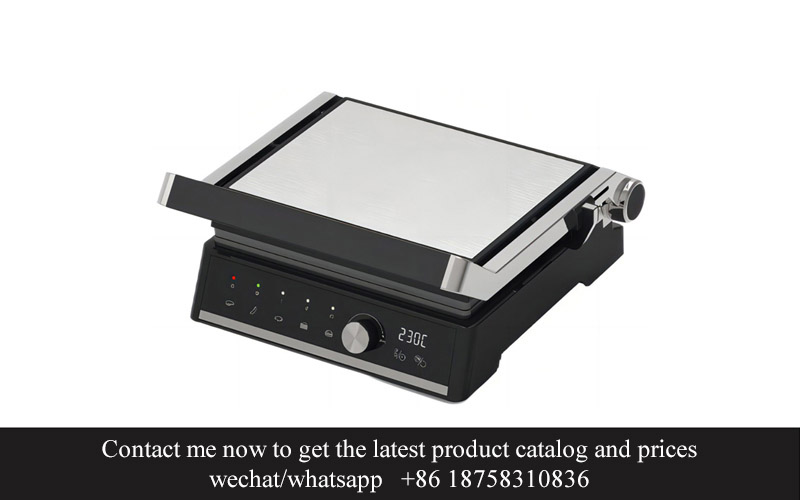
Ceramic coatings have revolutionized the cooking world, and it’s no wonder they’ve become a hit. Here’s a closer look at why these innovative coatings are capturing the hearts and kitchens of consumers everywhere.
The Non-Stick PhenomenonCeramic-coated non-stick plates offer a non-stick surface that’s a step above traditional Teflon. Unlike the latter, ceramic coatings are free from harmful PFOA and PTFE, making them a healthier choice for those who want to avoid potential health risks associated with these chemicals.
Durability and Scratch ResistanceOne of the standout features of ceramic coatings is their durability. These coatings are designed to withstand the rigors of daily cooking, maintaining their non-stick properties even after years of use. The scratch-resistant nature of ceramic also means that your cookware can handle metal utensils without the risk of damaging the surface.
Health and SafetyThe health benefits of ceramic coatings are significant. They don’t release harmful fumes when heated, and the smooth, non-porous surface is easy to clean, reducing the likelihood of bacteria and food particles sticking to the pan. This makes ceramic-coated cookware an excellent choice for those with allergies or sensitivities to certain chemicals.
Environmentally FriendlyIn an era where environmental consciousness is paramount, ceramic coatings shine. They are made from natural, non-toxic materials, which are better for the environment compared to the petrochemicals used in traditional non-stick coatings. Additionally, ceramic cookware is often recyclable, further reducing its carbon footprint.
Versatility in CookingCeramic coatings provide a versatile cooking experience. They can be used on induction cooktops, gas burners, and even ovens, offering a broad range of cooking possibilities. The even heat distribution of ceramic-coated cookware ensures that food cooks consistently without hot spots.
Cooking PerformanceThe non-stick nature of ceramic coatings allows for cooking with less oil, making it a healthier option. Foods release from the surface effortlessly, which means less time scrubbing and more time enjoying your meal. The smooth surface also makes flipping and tossing ingredients a breeze.
Longevity and MaintenanceCeramic-coated cookware is designed to last. While it’s not indestructible, it’s more resilient than other non-stick surfaces. With proper care and maintenance, these pans can outlast their counterparts, making them a wise investment for any kitchen.
Aesthetic AppealThe sleek, modern look of ceramic-coated cookware adds a touch of elegance to any kitchen. Available in a variety of colors and designs, these cookware sets can be a stylish statement piece, complementing any kitchen decor.
Cost-EffectiveDespite the high-quality materials and construction, ceramic-coated cookware is often priced competitively compared to other premium cookware options. This affordability makes it an attractive choice for budget-conscious consumers who still want top-notch performance.
Global TrendThe popularity of ceramic coatings is not just a regional phenomenon. It’s a global trend that’s gaining momentum as more consumers learn about the benefits of these innovative coatings. From Europe to Asia, ceramic-coated cookware is becoming the go-to choice for many home chefs and professional kitchens alike.
In conclusion, the rise of ceramic-coated non-stick plates is a testament to the power of innovation in the kitchen. With their health, environmental, and cooking benefits, it’s easy to see why ceramic coatings have become a hit with consumers worldwide.

In the ever-evolving landscape of kitchen appliances, the demand for ceramic coated non-stick plates has surged, driven by a combination of consumer preferences and market trends. Let’s delve into the dynamics shaping this demand and the growth trends that are making ceramic coatings a hit.
The Shift Towards Healthier CookingConsumers are increasingly conscious of their health and the impact of cooking methods on their diet. Ceramic coatings offer a non-toxic alternative to traditional non-stick coatings like PTFE (Teflon), which can release harmful chemicals at high temperatures. This shift towards healthier cooking practices has propelled the demand for ceramic-coated cookware.
Environmental Concerns and SustainabilityWith growing environmental concerns, consumers are looking for products that are eco-friendly and sustainable. Ceramic coatings are derived from natural minerals and are recyclable, making them an attractive choice for environmentally conscious shoppers. The market’s response to these sustainable materials has been overwhelmingly positive.
Versatility in Cooking StylesCeramic coated non-stick plates are not just a healthier option; they are also incredibly versatile. They can be used on induction cooktops, gas burners, and even in the oven, offering a wide range of cooking possibilities. This versatility has expanded the market for these products, as they cater to a diverse set of culinary preferences.
Innovative Features and LongevityManufacturers have been quick to innovate, introducing features like reinforced bases for better heat distribution and durability. The longevity of ceramic coatings has also been a selling point, as they maintain their non-stick properties for years without wearing out. This extended lifespan reduces the frequency of replacements and further boosts consumer interest.
Global Market ExpansionThe demand for ceramic coated non-stick plates is not confined to a single region. It’s a global phenomenon, with emerging markets showing significant growth. Countries like China, India, and Brazil are witnessing a surge in sales, driven by rising middle-class incomes and a growing awareness of the benefits of ceramic coatings.
E-commerce and Direct-to-Consumer SalesThe rise of e-commerce has played a pivotal role in the growth of the ceramic coated non-stick plate market. Direct-to-consumer sales have become more prevalent, allowing manufacturers to reach customers directly and offer competitive pricing. This shift has also enabled brands to gather valuable consumer feedback, which is then used to refine products and marketing strategies.
Competitive Pricing and Value PropositionCompetitive pricing has been a key factor in the market’s growth. Ceramic coated non-stick plates are often priced competitively compared to traditional non-stick and stainless steel cookware, making them an affordable upgrade for many households. The value proposition is clear: healthier, more durable, and versatile cookware at a reasonable cost.
Regulatory Changes and Safety StandardsRegulatory changes and heightened safety standards have also influenced the market dynamics. With stricter guidelines on the use of certain chemicals in cookware, ceramic coatings have stepped into the gap as a safe and compliant alternative. This has given manufacturers a competitive edge and further accelerated market growth.
The Role of Influencers and ReviewsInfluencers and online reviews have become powerful drivers of consumer behavior. Positive experiences shared by satisfied customers and endorsements from culinary experts have helped to build trust in ceramic coated non-stick plates. This social proof has significantly contributed to the market’s upward trajectory.
In conclusion, the market dynamics for ceramic coated non-stick plates are influenced by a variety of factors, including health consciousness, environmental concerns, versatility, innovation, global expansion, e-commerce, competitive pricing, regulatory changes, and influencer marketing. As these trends continue to evolve, the demand for ceramic coatings is expected to grow, solidifying their position as a staple in modern kitchens worldwide.
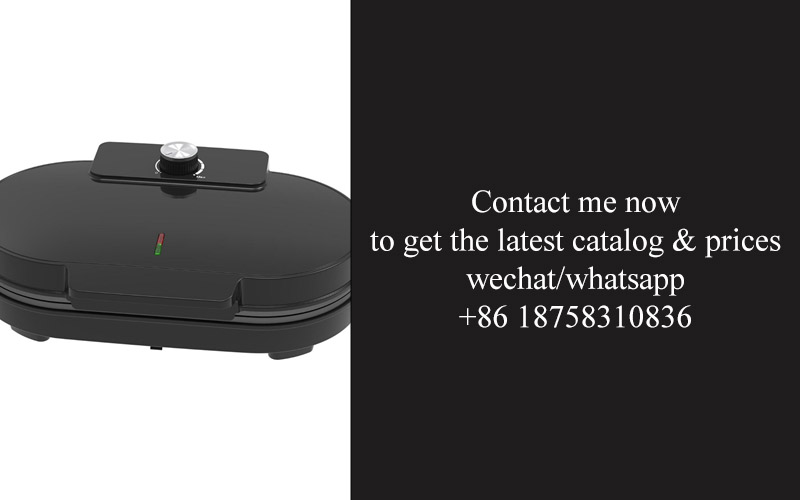
The intricate process of creating ceramic coated non-stick plates begins with selecting the highest quality materials. These plates are not just another addition to the kitchenware market; they represent a blend of science and art, where every step is crucial for the final product’s performance and longevity.
The raw materials, including the aluminum or stainless steel base, are meticulously chosen for their durability and thermal conductivity. The base must be able to withstand high temperatures without deforming, which is essential for the cooking experience. The material is then carefully cleaned and prepped for the coating process.
Once the base is ready, it moves on to the first stage of coating, which involves applying a thin layer of non-stick polymer. This layer acts as a foundation, providing the initial non-stick properties. The polymer is applied through a precision coating machine that ensures a uniform and consistent thickness across the entire surface of the plate.
After the polymer layer dries, the next step is to apply the ceramic coating. This is where the magic happens. The ceramic particles, typically sourced from a variety of natural minerals, are mixed with a bonding agent. The mixture is then spray-coated onto the polymer layer, creating a hard, durable, and non-porous surface.
The ceramic coating process requires precise temperature and humidity control. If the conditions are not optimal, the coating may not adhere properly, leading to a weaker bond and potentially uneven non-stick properties. The coated plates are baked in an oven at high temperatures to cure the ceramic particles, ensuring they bond strongly to the polymer layer.
Once the ceramic layer is cured, the plates undergo a series of quality checks. This includes visual inspections for any defects in the coating, as well as functional tests to ensure the non-stick properties meet the required standards. Any plate that fails these tests is removed from the production line to maintain the integrity of the brand.
The next step is the addition of any additional features or designs that might be part of the product line. This could include handles, which are typically made of heat-resistant materials and attached using industrial adhesives. The handles are secured and tested for strength and heat resistance before the plates move on to the final stage.
Before packaging, the plates are polished to remove any minor imperfections and to give them a glossy finish. This final touch not only enhances the appearance of the product but also helps to maintain the non-stick surface by reducing the likelihood of food particles getting trapped in microscopic imperfections.
The packaging process is as meticulous as the manufacturing itself. The plates are carefully placed in protective packaging, which includes bubble wrap or foam inserts to prevent any damage during shipping. The packaging is then sealed and labeled with the product information, including the brand logo, care instructions, and any certifications or endorsements.
Throughout the manufacturing process, there is a strong emphasis on sustainability and environmental responsibility. Factories aim to minimize waste by recycling materials where possible and using energy-efficient equipment. The end goal is not just to produce a high-quality product but to do so in a way that is respectful of the environment.
In conclusion, the manufacturing process of ceramic coated non-stick plates is a complex and multi-step endeavor. From selecting the base material to the final packaging, each stage is designed to ensure that the consumer receives a product that is not only functional but also beautiful and sustainable. The meticulous attention to detail at every turn is what sets these plates apart in the competitive kitchenware market.
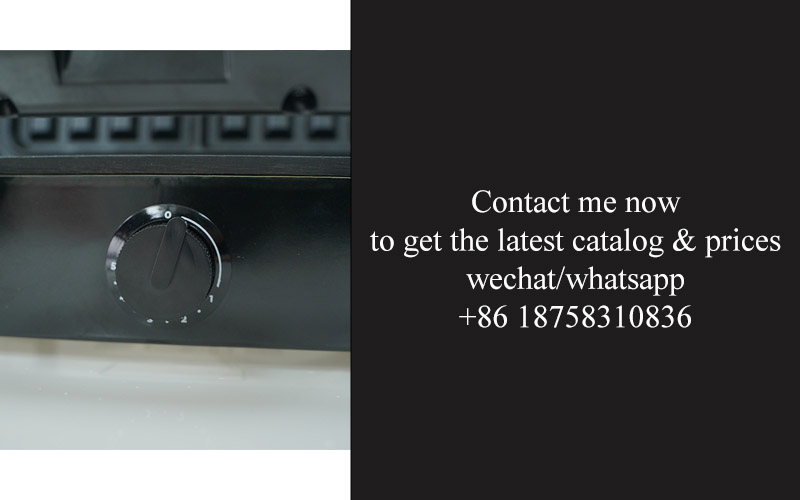
Ceramic coated non-stick plates have gained immense popularity in recent years, offering a healthier and more sustainable alternative to traditional non-stick cookware. Let’s delve into the numerous benefits that make these plates a hit in the kitchen.
Their non-stick surface is the cornerstone of their appeal. The ceramic coating provides an incredibly smooth and durable finish that reduces the need for excessive oil or butter, making it easier to cook with less fat. This not only contributes to healthier meals but also simplifies the cleaning process. Say goodbye to stuck-on food and those dreaded scrubbing sessions!
Durability is another key advantage. Unlike the delicate surfaces of older non-stick coatings, which can flake or peel with use, ceramic coatings are much harder-wearing. They can withstand metal utensils without scratching, which means they are less likely to need replacing, saving you money in the long run.
The eco-friendliness of ceramic coated non-stick plates is a major draw for environmentally conscious consumers. These plates are free from PFOA and PTFE, which are the harmful chemicals found in traditional non-stick coatings. This means they are safer for you, your family, and the planet. The absence of these substances also contributes to a longer lifespan of the cookware, reducing the frequency of disposal and landfills.
Ease of maintenance is a significant benefit that can’t be overlooked. The non-stick surface of ceramic plates makes it a breeze to release food and clean up spills. This feature is particularly appreciated by busy households and those who prefer quick and easy meal prep. Plus, the smooth surface is less prone to bacteria growth, keeping your kitchen cleaner and healthier.
Cooking performance is another strong suit of ceramic coated non-stick plates. The heat is distributed evenly across the surface, ensuring that your food cooks consistently and to perfection. Whether you’re searing a steak or sautéing vegetables, these plates provide the control and precision that professional chefs demand.
One of the standout benefits is the versatility these plates offer. They can be used on a variety of cooktops, including induction, electric, gas, and ceramic, making them a universal choice for any kitchen. This means you don’t have to worry about investing in multiple sets of cookware for different appliances.
The aesthetic appeal of ceramic coated non-stick plates is also worth mentioning. They come in a range of colors and designs, allowing you to personalize your kitchen. The sleek, modern look can elevate the style of any kitchen, from traditional to contemporary.
Safety is a paramount concern for many consumers, and ceramic coated non-stick plates deliver on this front. The high-temperature resistance of the ceramic coating means these plates can handle up to 850°F (450°C) without releasing harmful fumes or toxins. This makes them safe for use with high-heat cooking methods like stir-frying or sautéing.
Lastly, the health benefits of ceramic coated non-stick plates are undeniable. By reducing the amount of oil needed to cook, these plates can help lower the overall calorie count of your meals. This is especially beneficial for those following a diet or looking to improve their heart health.
In conclusion, the benefits of ceramic coated non-stick plates are numerous and compelling. From their non-stick qualities and durability to their eco-friendliness and safety, these plates have earned their place as a favorite in modern kitchens. Whether you’re a health-conscious chef or a busy homemaker, these plates offer a practical, sustainable, and enjoyable cooking experience.

Ceramic coatings have emerged as a beacon of innovation in the cookware industry, offering a greener alternative to traditional non-stick surfaces. Here’s a detailed overview of how ceramic coating contributes to a more sustainable approach:
The composition of ceramic coatings is a key factor in their environmental benefits. Unlike PTFE (Teflon), which is derived from petrochemicals, ceramic coatings are made from natural minerals like quartz and clay. This natural origin reduces the carbon footprint associated with production, making ceramic coatings a more eco-friendly choice.
The durability of ceramic coated non-stick plates is remarkable. They are designed to last significantly longer than their PTFE counterparts, which can degrade and release harmful chemicals over time. This longevity means that ceramic-coated plates often need to be replaced less frequently, thereby reducing waste and the need for raw materials.
Ceramic coatings are inherently non-toxic. They do not contain PFAS (perfluoroalkyl substances), which have been linked to health issues and environmental pollution. By choosing ceramic-coated plates, consumers can avoid the potential health risks associated with traditional non-stick coatings while also supporting a cleaner environment.
The energy efficiency of ceramic-coated cookware is another green advantage. The non-stick nature of ceramic allows for lower cooking temperatures, which can reduce energy consumption. Additionally, ceramic surfaces require less oil or butter for cooking, further minimizing the environmental impact of food preparation.
The manufacturing process of ceramic coatings is designed to be more sustainable. The materials used are often recycled or sourced from renewable resources. The production process itself is also cleaner, with less waste and emissions compared to the manufacturing of PTFE coatings.
Ceramic-coated non-stick plates are also easier to clean, which reduces water usage. Traditional non-stick surfaces can be more difficult to clean, often requiring harsh chemicals that can harm the environment. With ceramic coatings, a simple wipe with a damp cloth is usually sufficient, cutting down on water waste.
The disposal of ceramic-coated cookware is also more environmentally friendly. When it comes time to replace them, ceramic coatings are less likely to chip or crack, which means they can be recycled or composted. In contrast, PTFE coatings can degrade and release harmful substances into the environment when they end up in landfills.
Ceramic coatings have a lower carbon footprint during their entire lifecycle. From production to disposal, these coatings offer a more sustainable option. The natural materials, long lifespan, and ease of cleaning all contribute to a reduced environmental impact.
The demand for eco-friendly products has been growing, and ceramic-coated non-stick plates are riding the wave of this trend. Consumers are increasingly conscious of the environmental consequences of their purchasing decisions, and ceramic coatings are answering this call.
Lastly, the green credentials of ceramic coatings are not just about reducing harm; they’re also about promoting positive environmental action. By choosing ceramic-coated cookware, consumers are making a statement and contributing to the broader movement towards sustainability. This collective effort can lead to significant changes in how we produce and dispose of consumer goods, ultimately shaping a cleaner, more sustainable future.
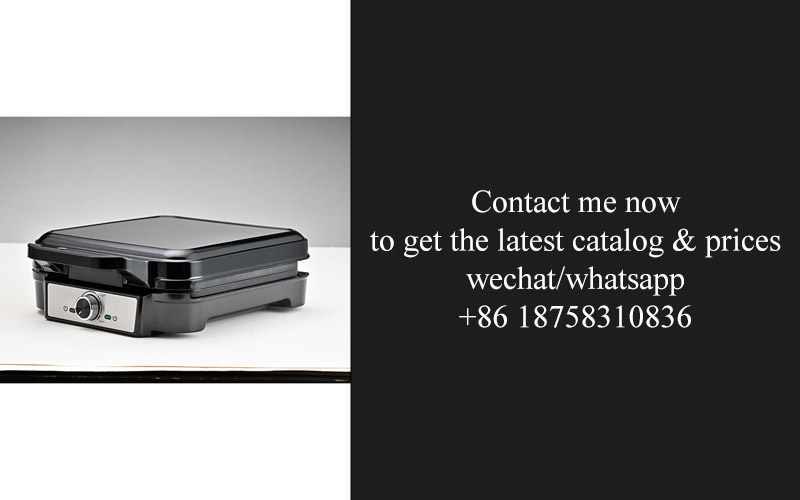
Ceramic coated non-stick plates have become a staple in many kitchens, and it’s not hard to see why. Home chefs are talking about the benefits of these innovative cookware pieces, sharing their experiences and insights. Here’s a glimpse into what they’re saying:
“I love how easy it is to cook with these ceramic plates. No more scrubbing or using excessive amounts of oil to prevent sticking. It’s a game-changer for my busy weeknights.”
Many consumers appreciate the non-stick properties of ceramic coatings, which make cooking a breeze. The smooth surface allows for effortless food release, reducing the need for excessive oil or butter, which can be a health concern for those watching their fat intake.
“The durability of these plates is impressive,” notes a satisfied customer. “I’ve had mine for over a year now, and it’s still going strong. It’s a much better investment than those cheaper non-stick pans that start flaking after a few months.”
Durability is a key factor for many home chefs. The ceramic coating is designed to withstand high temperatures without degrading, making it a long-lasting option for those who cook frequently.
Safety is another area where ceramic coated non-stick plates shine. Unlike traditional non-stick coatings, which can release harmful chemicals when overheated, ceramic is free from PFOA and PTFE, two substances that have raised health concerns in the past.
“I feel more confident cooking with ceramic plates,” says a health-conscious home chef. “I can cook at higher temperatures without worrying about the chemicals leaching into my food.”
The ease of cleaning is also a topic of praise. “I used to dread cleaning my pans after a heavy meal, but these ceramic plates are a dream to clean,” shares a busy mom. “They’re dishwasher safe, and most of the time, a quick rinse is all they need.”
Many home chefs also appreciate the aesthetic appeal of ceramic coated non-stick plates. The sleek design and variety of colors and patterns make them a stylish addition to any kitchen.
“Having these plates in my kitchen makes cooking more enjoyable,” remarks a culinary enthusiast. “The vibrant colors and modern look are a nice contrast to my more traditional cookware.”
One of the most notable aspects of ceramic coated non-stick plates is their versatility. They can be used on various cooking surfaces, including induction cooktops, which is a significant advantage for those with mixed appliances.
“I was skeptical at first about using ceramic plates on my induction stove, but they work perfectly,” says a tech-savvy chef. “It’s great to have the flexibility to cook on different types of cooktops without having to switch pans.”
The eco-conscious consumer is also drawn to ceramic coated non-stick plates. The manufacturing process is more sustainable, and the plates themselves are often made from recycled materials.
“I feel good about using these plates,” explains an environmentally aware chef. “They’re not only better for my health but also for the planet.”
The community of home chefs is vocal about the positive impact ceramic coated non-stick plates have had on their cooking experiences. From the non-stick properties to the eco-friendly manufacturing process, these plates seem to have struck a chord with those who value quality, safety, and sustainability in their kitchenware.

In the bustling world of kitchenware, the competitive landscape for ceramic coated non-stick plates is as diverse as it is dynamic. From established giants to emerging innovators, here’s a snapshot of who’s making waves in the market.
The traditional players, with their decades-long history in the cookware industry, have adapted to the ceramic coating trend. Companies like Tefal and All-Clad have introduced ceramic-coated lines that blend their classic non-stick technologies with the new, eco-friendly ceramic coating. These brands leverage their strong consumer trust and brand recognition to lead the market in terms of sales and market share.
On the other side of the spectrum, we find a group of newer companies that have embraced ceramic coatings as their core technology. Brands like Greenpan and OXO Good Grips have made a name for themselves by focusing solely on ceramic cookware. Their sleek designs, commitment to sustainability, and competitive pricing have won over a loyal following.
The rise of niche players has also been a significant trend in the ceramic coated non-stick plate market. Companies like Scanpan and Cuisinart have niche products that cater to specific consumer needs. For instance, Scanpan’s PFOA-free ceramic coating appeals to those who are health-conscious, while Cuisinart’s durable and scratch-resistant ceramic coatings attract consumers looking for longevity.
Innovation is a key factor in this competitive landscape. Brands like Utopia Kitchen and Caraway have set new standards with their ceramic-coated cookware. Utopia Kitchen, for example, offers a wide range of ceramic-coated products that are not only non-stick but also dishwasher safe and scratch-resistant. Caraway, on the other hand, has gained attention for its eco-friendly packaging and commitment to reducing plastic waste.
Collaborations and partnerships have also become a hallmark of the competitive landscape. Some companies are teaming up with well-known chefs and influencers to create limited edition lines. For instance, All-Clad has collaborated with the famous chef Thomas Keller, while Greenpan has partnered with the actress and environmental activist Gwyneth Paltrow. These collaborations not only boost brand visibility but also appeal to consumers who are fans of these personalities.
The market is not without its challenges. The proliferation of brands and the influx of generic, lower-quality ceramic coated products have created a crowded and sometimes confusing market for consumers. As a result, brand differentiation and quality assurance have become crucial for manufacturers to stand out.
In terms of geographical presence, the market is global but with different strengths in various regions. In North America and Europe, there is a strong preference for high-quality, durable ceramic coated cookware. In Asia, however, there is a growing demand for more affordable options, which has led to a surge in the number of budget-friendly ceramic coated brands.
Finally, the competitive landscape is shaped by the ever-evolving consumer preferences. As health and environmental concerns continue to grow, the market is likely to see an increase in demand for ceramic-coated cookware that is not only non-stick but also free from harmful chemicals and sustainable in its production and disposal.
In conclusion, the competitive landscape of ceramic coated non-stick plates is a complex tapestry of innovation, collaboration, and consumer demand. It’s a market where established players are adapting, niche brands are emerging, and the consumer is ultimately the winner with a plethora of choices.

In the ever-evolving world of kitchenware, ceramic coated non-stick cookware has emerged as a standout innovation. As we look ahead, the future of this product category is brimming with predictions and opportunities that promise to reshape the market.
The shift towards healthier cooking methods has been a significant driver in the popularity of ceramic coated non-stick cookware. With growing concerns about the health risks associated with traditional non-stick coatings, consumers are seeking alternatives that offer the same convenience without the potential drawbacks. This demand has opened up a world of possibilities for manufacturers and innovators alike.
One of the most exciting opportunities lies in the customization of ceramic coatings. As consumers become more discerning, they are looking for cookware that not only performs well but also complements their personal style. This has led to a surge in the development of unique color options and patterns, catering to a wide range of tastes and preferences. The ability to tailor the look of cookware could potentially redefine the market, making it more engaging and appealing to a broader audience.
The integration of smart technology is another area ripe for exploration. Imagine a ceramic coated non-stick pan that not only provides an easy-to-clean surface but also offers cooking guidance through integrated sensors. This kind of innovation could revolutionize the cooking experience, making it more interactive and efficient. The potential for such advancements is vast, and companies that can successfully harness this technology could gain a significant competitive edge.
Sustainability is a key factor that is shaping the future of ceramic coated non-stick cookware. As environmental consciousness grows, consumers are increasingly looking for products that are eco-friendly and have a minimal carbon footprint. This presents an opportunity for manufacturers to invest in sustainable practices, from sourcing raw materials to packaging. By doing so, they can attract environmentally conscious consumers and build a brand reputation that resonates with today’s values.
The global market for ceramic coated non-stick cookware is also witnessing a trend towards localization. As consumers become more interested in regional cuisines and ingredients, there’s a growing demand for cookware that can handle a variety of cooking techniques. This has spurred manufacturers to create collections that cater to specific culinary traditions, offering pans and pots designed for specific types of cooking. This localization can lead to niche markets that are highly profitable and loyal.
The rise of online shopping has significantly impacted the kitchenware industry, and ceramic coated non-stick cookware is no exception. With the convenience of online shopping, consumers can easily compare products, read reviews, and make informed purchases. This has created an opportunity for brands to leverage digital marketing and social media to reach a wider audience. By engaging with consumers through these platforms, companies can build a community around their brand and foster brand loyalty.
In terms of market leaders, several names have emerged as key players in the ceramic coated non-stick cookware space. These brands have established themselves through a combination of quality products, innovative designs, and strong marketing strategies. However, the competitive landscape is dynamic, with new entrants constantly striving to carve out their niche. The key to staying ahead in this market will be a relentless pursuit of innovation and a deep understanding of consumer needs.
The future of ceramic coated non-stick cookware also hinges on the ability of manufacturers to adapt to changing regulations. As health and environmental concerns continue to grow, new regulations may be introduced that could impact the production and sale of cookware. Companies that can navigate these changes effectively will be well-positioned to maintain their market share and even grow.
Lastly, the opportunity for cross-border collaboration cannot be overlooked. As the world becomes more interconnected, there is a chance for manufacturers to learn from each other and share best practices. This could lead to the development of new materials and technologies that further enhance the performance and longevity of ceramic coated non-stick cookware.
In conclusion, the future of ceramic coated non-stick cookware is bright, filled with opportunities for innovation, sustainability, and market expansion. By staying attuned to consumer trends, embracing technology, and prioritizing quality and sustainability, manufacturers can continue to lead the market and provide consumers with cookware that not only performs but also stands out in a crowded marketplace.